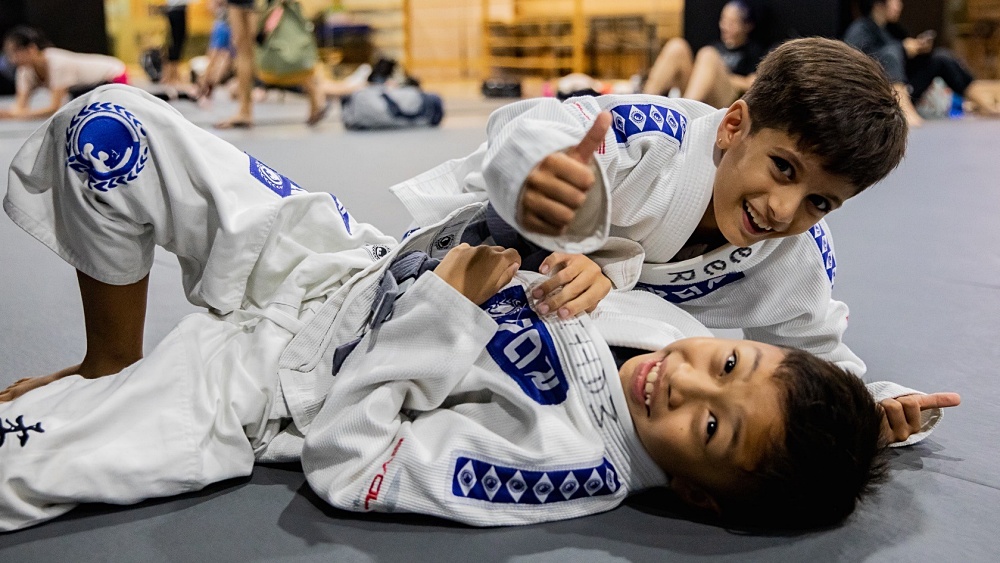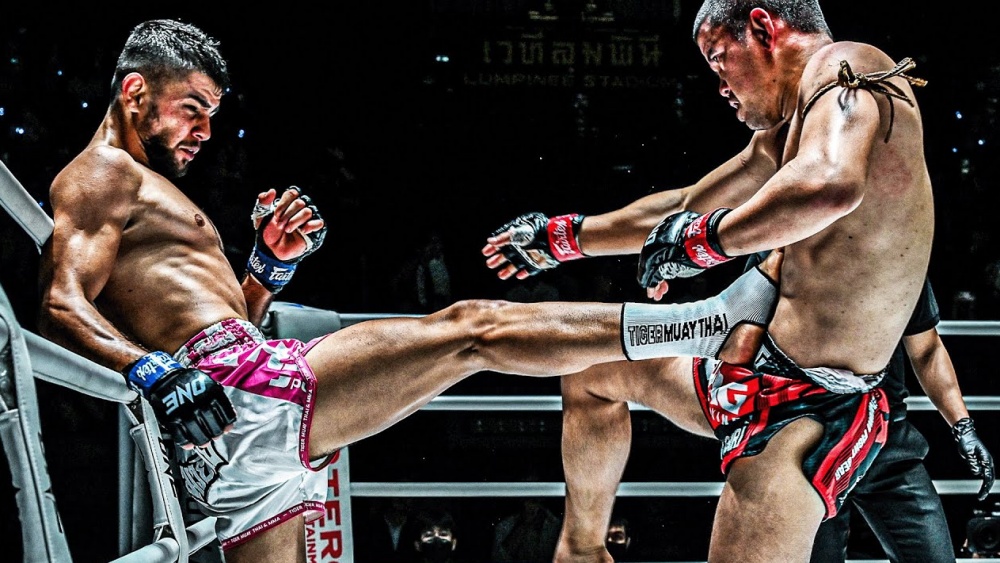One of the biggest problems Brazilian Jiu-Jitsu (BJJ) practitioners have when they transition to no-gi grappling is dealing with the wrestling-heavy style of grappling that tends to favor size and strength. While this can be difficult to overcome, there are several strangulation techniques that, if done correctly, can be very effective, even in the wrestling-centric style of no-gi grappling, so make sure you practice these techniques frequently!
1) The Darce Choke
Named after Joe D’Arce, who utilized the choke to great success in competition during the 90’s, the Darce choke is an incredibly powerful submission that is extremely useful in no-gi grappling. While it was once considered a low percentage maneuver that would only work against less-skilled opponents, two decades of development and proven use have shown that the Darce choke is anything but ineffective. Whether you are spectating a weeknight BJJ class, a local tournament, or even the main event of a UFC card, you will likely see the Darce in use.
What makes the Darce so useful in no-gi is that it is a fantastic way to counter your opponent’s underhook. Underhooks are used quite commonly in all forms of no-gi grappling, especially wrestling, as they are the best means for an athlete trapped on the bottom to free their hips and start to escape back to their feet. Therefore, the Darce is a great way to not only stop your opponent from escaping from the bottom but to capitalize upon it with a submission.
Let’s say you have your opponent trapped in side control; they attempt to escape by establishing an underhook, which will allow them to turn into you and come up on a single leg. Before they do, overwrap their underhook with an overhook, punching it all the way around their arm and then to the back of their neck. So if they use their right arm as an underhook, your left arm will be the overhook, with your left thumb at the back of their neck. Then, clasp your right hand to your left in a gable grip, which will allow you to tighten the strangle by ratcheting your right elbow on the back of their neck.
Once the grip is tight enough, you can complete the strangle by sliding your right bicep to your left hand, so you have established a tight figure-four. Now, sprawl backward to finish the choke, or you can step over into mount for an incredibly powerful finish!
2) The Arm-In Guillotine
While many practitioners favor what is known as the “straight guillotine”, where only the opponent’s neck is enwrapped in the strangle (as opposed to the arm-in guillotine where the arm is ensnarled as well), the arm-in guillotine offers many advantages over its counterpart. While there is the tradeoff of a slightly longer time-to-strangle, the arm-in guillotine offers a degree of control that is absolutely crucial for the slippery, wrestling-heavy style of grappling we see in no-gi competition.
While the arm-in guillotine can be set up from a wide array of positions (both on the top and on the bottom), one of the most common places to attack with it is from the full guard. When you are playing guard, you can attack with the arm-in guillotine if your opponent’s head falls below your armpit at any point, such as off of a failed hip-bump sweep or kimura attack.
Let’s say you attack with a hip bump sweep, but are unsuccessful. Once your opponent stops the sweep, throw your right arm around your opponent’s neck so that your armpit is on the base of their spine. As your right-hand snakes around the neck and under the chin, the left arm will overwrap your opponent’s right arm: your left hand should ensnarl your opponent’s arm before reconnecting with your right hand under the chin. To finish the choke, simultaneously pull your arms towards you (to pull your opponent’s arm away from their body) as you pull your hands up and into your opponent’s throat. If done correctly, your opponent will quickly tap out!
One advantage of the arm-in guillotine is the added benefit of control that you have over your opponent by attacking their arm as well as their neck. So even if your initial choke isn’t successful in forcing a tap, the additional control over the opponent’s arm allows you to follow up with auxiliary attacks, such as triangle chokes and omoplatas!
3) The Arm Triangle
As no-gi grappling is much more slippery than gi grappling, many practitioners take advantage of this in their escape attempts by utilizing explosiveness and strength. Any BJJ practitioners who have spent time practicing no-gi have likely been thrown off of dominant positions such as mount and side control by bigger, stronger partners. While it can be frustrated to deal with this aspect of no-gi, it can be capitalized on with the arm triangle choke.
Let’s say you have successfully passed your opponent’s guard and established a mount position, but your opponent is very explosive and tough to hold down. If they attempt to use brute strength to escape by bridging over a shoulder, their arm will come across their centerline. So, if they bridge over their left shoulder, allow their right arm to pass underneath you. Once it has crossed 50% of their body, shoot your right arm around their neck, so your right hand is grasping their right shoulder. At the same time, drop your head on the left side of their right shoulder, trapping their arm in place.
To finish the choke, dismount to your left, clasping your hands together. Now flex your right bicep as you pull your chest on top of your opponent’s arm, strangling them and forcing them to tap.
Transitioning to no-gi grappling can be quite frustrating for traditional gi BJJ practitioners as the wrestling-heavy style tends to favor the stronger, more athletic opponent. But by practicing these three chokes frequently, you will be able to overcome your opponent’s wrestling and strength advantages through proper technique!
You may also like:
















